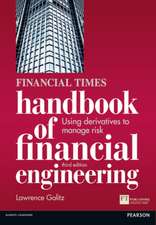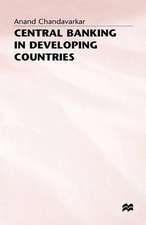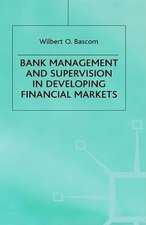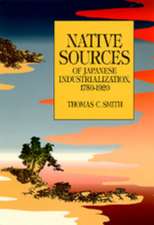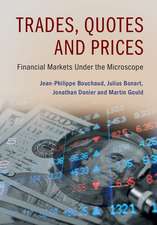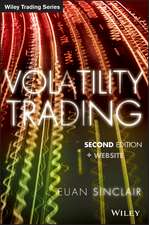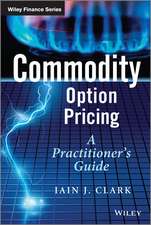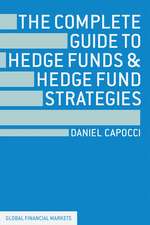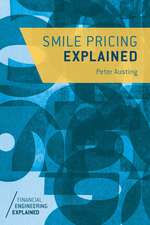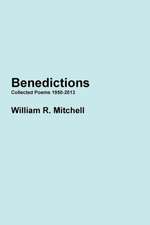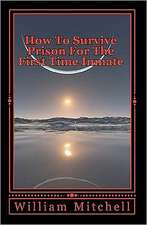Macroeconomics
Autor William Mitchell, L. Randall Wray, Martin Wattsen Limba Engleză Paperback – 24 feb 2019
Preț: 384.32 lei
Preț vechi: 464.59 lei
-17% Nou
Puncte Express: 576
Preț estimativ în valută:
73.56€ • 79.93$ • 61.83£
73.56€ • 79.93$ • 61.83£
Carte disponibilă
Livrare economică 31 martie-14 aprilie
Livrare express 14-20 martie pentru 70.78 lei
Preluare comenzi: 021 569.72.76
Specificații
ISBN-13: 9781137610669
ISBN-10: 1137610662
Pagini: 604
Ilustrații: 5 bw illus
Dimensiuni: 193 x 260 x 29 mm
Greutate: 1.23 kg
Ediția:1st ed. 2019
Editura: Bloomsbury Publishing
Colecția Bloomsbury Academic
Locul publicării:London, United Kingdom
ISBN-10: 1137610662
Pagini: 604
Ilustrații: 5 bw illus
Dimensiuni: 193 x 260 x 29 mm
Greutate: 1.23 kg
Ediția:1st ed. 2019
Editura: Bloomsbury Publishing
Colecția Bloomsbury Academic
Locul publicării:London, United Kingdom
Caracteristici
A focus on the realities of how money and banks operate, and on applied theories of financial instability, gives an unrivalled real-world insight into how the economy actually works
Notă biografică
William Mitchell is a Professor of Economics at the University of Newcastle, AustraliaL. Randall Wray is a Senior Scholar at the Levy Economics Institute of Bard College, USAMartin Watts is a Professor of Economics at the University of Newcastle, Australia
Cuprins
PART A: INTRODUCTION & MEASUREMENT 1 Introduction 2 How to Think and Do Macroeconomics 3 A Brief Overview of the Economic History and the Rise of Capitalism 4 The System of National Income and Product Accounts 5 Labour Market Concepts and Measurement 6 Sectoral Accounting and the Flow of Funds 7 Methods, Tools and Techniques 8 Framing and Language in Macroeconomics PART B: CURRENCY, MONEY & BANKING 9 Introduction to Sovereign Currency: The Government and its Money 10 Money and Banking PART C: NATIONAL INCOME, OUTPUT AND EMPLOYMENT DETERMINATION 11 The Classical System 12 Mr Keynes and the 'Classics' 13 The Theory of Effective Demand 14 The Macroeconomic Demand for Labour 15 The Aggregate Expenditure Model 16 Aggregate Supply PART D UNEMPLOYMENT AND INFLATION: THEORY AND POLICY 17 Unemployment and Inflation 18 The Phillips Curve and Beyond 19 Full Employment Policy PART E ECONOMIC POLICY IN AN OPEN ECONOMY 20 Introduction to Monetary and Fiscal Policy Operations 21 Fiscal Policy in Sovereign Nations 22 Fiscal Space and Fiscal Sustainability 23 Monetary Policy in Sovereign Nations 24 Policy in an Open Economy: Exchange Rates, Balance of Payments and Competitiveness PART F ECONOMIC INSTABILITY 25 The Role of Investment in Profit Generation 26 Stabilising the Unstable Economy PART G HISTORY OF MACROECONOMIC THOUGHT 27 Overview of the History of Economic Thought 28 The IS-LM Framework29 Modern Schools of Economic Thought 30 The New Monetary Consensus in Macroeconomics PART H CONTEMPORARY DEBATES 31 Recent Policy Debates 32 Macroeconomics in the Light of the Global Financial Crisis 33 Macroeconomics for the Future.
Recenzii
Even some mainstream economists now acknowledge that the macroeconomics of the past thirty years represents a big step back. But they do not recognize that this is because it lacks a pluralist perspective, and in the meantime they have ignored the revolutionary potential of heterodox economics for reconstructing macroeconomics. This new book points out the right direction for the coming macroeconomics revolution.
Finally, a macroeconomics text that takes a modern-monetary approach to the macroeconomy. Finally, an alternative to the mainstream vision of the macro economy and what it says and, more importantly, fails to say, about the real world. The presentation of Keynes closely approximates his vision, a much-needed change from texts that present a "bastardized" view of Keynes' theory. The book is highly readable, the assumptions underlying the different models are presented clearly, the logic easy to follow, and the historical context serves to add relevance.
A complete, up-to-date and excellent account of macroeconomic theory. An excellent critique of the mainstream economic paradigm, it calls for more realistic approaches to human behaviour, and for heterodox ideas in economics. It presents macroeconomic methodology in the light of the 2007-08 crisis, and outlines how economics should proceed in the post-crash world. One of the most interesting and remarkable macroeconomics textbooks of the past few years.
Finally, a macro textbook that rejects neoclassical microfoundations as a basis for understanding how capitalism works. The authors replace maximizing individuals with social classes where capitalist firms exercising differential power largely determine economic outcomes.
The most progressive macroeconomics textbook on the market. Organized around a balance sheet view, the authors carefully examine the most important issues of our time: Why government as the sovereign issuer of currency is not financially constrained, how banks create deposits by making loans and how the central bank influences the economy by shifting interest rates. The authors are outstanding scholars of macroeconomics, and this textbook should enlighten the next generation of students. I recommend it wholeheartedly.
A uniquely well-structured, clear discussion of macroeconomics for the 21st century, contrasting a useful and realistic analysis of a modern monetary production economy with the flawed, unrealistic and outdated narrowly neoclassical approach which has failed so comprehensively in recent years. Quite simply the best economics textbook I have ever read, and one which should become a standard text in many universities and colleges in the years to come.
Supremely accessible . Unlike most other textbooks, it explains schools of thought, relates them to the history of economic ideas and provides historical and institutional detail. Students are invited to reflect on why economists disagree, what macroeconomics means, and the role of language and framing. One can only wish that all textbooks nurtured sensitivity to these topics in future economists. All in all, an exceptionally clear text for students new to macroeconomics and a good grounding in the current policy debates shown in the final part of the book ... It marries pluralism of ideas with a clear exposition of Modern Monetary Theory, all with institutional realism and analytical rigor - a major feat. Highly recommended!
This is a long awaited first-year university textbook where heterodox and mainstream approaches run side by side within a critical framework which avoids the pedagogical pitfall of forcing students to learn economics through mainstream lenses. Students and experienced economists alike can learn from this wonderful book.
Finally, a macroeconomics text that takes a modern-monetary approach to the macroeconomy. Finally, an alternative to the mainstream vision of the macro economy and what it says and, more importantly, fails to say, about the real world. The presentation of Keynes closely approximates his vision, a much-needed change from texts that present a "bastardized" view of Keynes' theory. The book is highly readable, the assumptions underlying the different models are presented clearly, the logic easy to follow, and the historical context serves to add relevance.
A complete, up-to-date and excellent account of macroeconomic theory. An excellent critique of the mainstream economic paradigm, it calls for more realistic approaches to human behaviour, and for heterodox ideas in economics. It presents macroeconomic methodology in the light of the 2007-08 crisis, and outlines how economics should proceed in the post-crash world. One of the most interesting and remarkable macroeconomics textbooks of the past few years.
Finally, a macro textbook that rejects neoclassical microfoundations as a basis for understanding how capitalism works. The authors replace maximizing individuals with social classes where capitalist firms exercising differential power largely determine economic outcomes.
The most progressive macroeconomics textbook on the market. Organized around a balance sheet view, the authors carefully examine the most important issues of our time: Why government as the sovereign issuer of currency is not financially constrained, how banks create deposits by making loans and how the central bank influences the economy by shifting interest rates. The authors are outstanding scholars of macroeconomics, and this textbook should enlighten the next generation of students. I recommend it wholeheartedly.
A uniquely well-structured, clear discussion of macroeconomics for the 21st century, contrasting a useful and realistic analysis of a modern monetary production economy with the flawed, unrealistic and outdated narrowly neoclassical approach which has failed so comprehensively in recent years. Quite simply the best economics textbook I have ever read, and one which should become a standard text in many universities and colleges in the years to come.
Supremely accessible . Unlike most other textbooks, it explains schools of thought, relates them to the history of economic ideas and provides historical and institutional detail. Students are invited to reflect on why economists disagree, what macroeconomics means, and the role of language and framing. One can only wish that all textbooks nurtured sensitivity to these topics in future economists. All in all, an exceptionally clear text for students new to macroeconomics and a good grounding in the current policy debates shown in the final part of the book ... It marries pluralism of ideas with a clear exposition of Modern Monetary Theory, all with institutional realism and analytical rigor - a major feat. Highly recommended!
This is a long awaited first-year university textbook where heterodox and mainstream approaches run side by side within a critical framework which avoids the pedagogical pitfall of forcing students to learn economics through mainstream lenses. Students and experienced economists alike can learn from this wonderful book.



